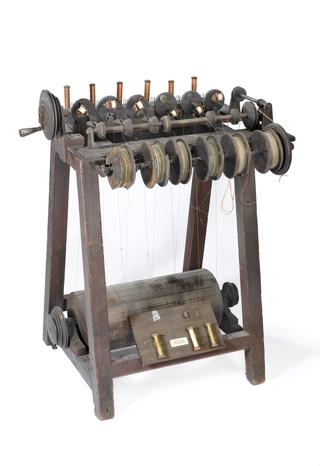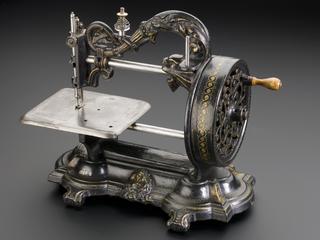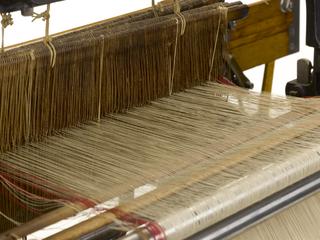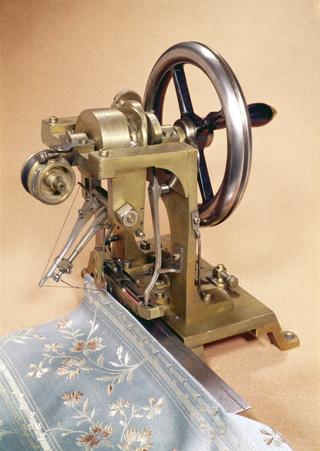
Model of silk doubling machine
- Made:
- 1873 in Manchester
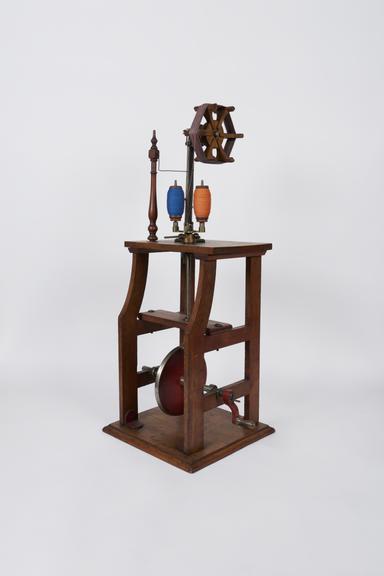
Model of silk doubling machine, designed and patented by Thomas Dickins, Manchester, 1873. Patent no. 1763.
A silk thread is too fine to be used singly, so two or more threads are twisted together, a process called 'throwing'. This machine was designed and patented by Thomas Dickins in 1873 (patent no. 1763), and includes an automatic stop mechanism should either of the threads break.
This machine has a vertical spindle which is driven by bevel friction wheels below and has on it a frame carrying two bobbins. On these have been wound the two threads that are to be twisted together, and the machine does the twisting while the threads are being unwound from the bobbins and wound together upon the single reel above. The frame rests upon a shoulder on the spindle, and revolves with it by friction. To stop the machine instantly, should either thread break, an automatic arrangement is fitted. The thread from each bobbin is drawn through an eye in a wire whose other end projects a little through a hole in the base of the revolving frame; should a thread break, the wire which it supported drops further through the frame, and so in revolving strikes an arm which is fixed to a loose collar on the spindle. The arm has on it two rollers which, being forced up fixed inclines, lift the collar, which thus comes in contact with the bobbin carrier and arrests its motion; the winding reel above is driven by gearing from the bobbin, so that the winding also ceases.
Details
- Category:
- Textiles Machinery
- Object Number:
- 1873-29
- Materials:
- wood (unidentified), mahogany (wood), brass (copper, zinc alloy), wrought iron and silk thread
- type:
- silk doubling machine and model - representation
- credit:
- Dickins, T.
